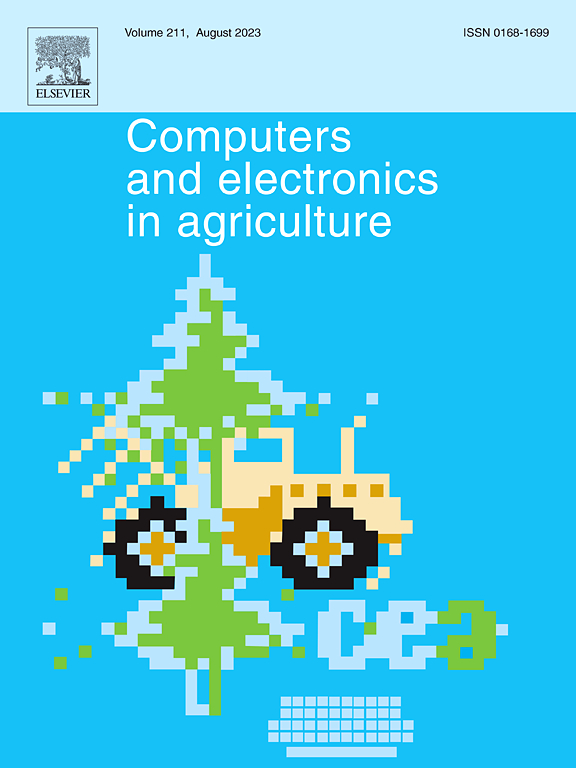An underwater image segmentation model for complex scenes in aquaculture using vision Transformer
IF 7.7
1区 农林科学
Q1 AGRICULTURE, MULTIDISCIPLINARY
引用次数: 0
Abstract
Underwater image processing holds significant importance for aquaculture. Traditional segmentation models have primarily been trained and tested in terrestrial environments. However, substantial differences exist between underwater and terrestrial environments, particularly in lighting conditions and color distribution, and other underwater physical phenomena. The unique underwater conditions render traditional segmentation models unsuitable for direct application, and obtaining ample data becomes challenging. Consequently, underwater image segmentation techniques encounter issues of diminished segmentation performance in practical applications. Therefore, this paper constructs an underwater image segmentation model for complex scenes in aquaculture. This paper first proposes a data preprocessing method based on Mosaic data enhancement technology to process limited datasets and increase their richness and diversity. Second, a residual feature enhancement module is constructed to capture global context information and enhance local feature extraction so local and global dependencies are effectively combined. Finally, a multiscale feature residual fusion module is proposed, which uses residual convolution to enhance the efficient fusion of low- and high-level semantic features and solves the semantic gap between the encoder and decoder. This paper conducts extensive experiments on the three datasets FishData, the underwater images segmentation dataset, and the large-scale fish dataset to verify the effectiveness of the underwater image segmentation model proposed in this paper. Compared with the existing classical network model, the , , and of the proposed model reached 92.20%, 97.85%, 92.47% and 92.9%, respectively. Experimental results show that the proposed model performs better in underwater image segmentation tasks.
基于vision Transformer的水产养殖复杂场景水下图像分割模型
水下图像处理对水产养殖具有重要意义。传统的分割模型主要是在陆地环境中训练和测试的。然而,水下和陆地环境之间存在着实质性的差异,特别是在照明条件和色彩分布以及其他水下物理现象方面。独特的水下条件使得传统的分割模型不适合直接应用,获取充足的数据成为挑战。因此,水下图像分割技术在实际应用中会遇到分割性能下降的问题。为此,本文构建了水产养殖复杂场景的水下图像分割模型。本文首先提出了一种基于马赛克数据增强技术的数据预处理方法,以处理有限的数据集,增加数据集的丰富度和多样性。其次,构建残差特征增强模块,捕获全局上下文信息,增强局部特征提取,使局部依赖和全局依赖有效结合;最后,提出了一种多尺度特征残差融合模块,利用残差卷积增强了高低语义特征的高效融合,解决了编码器和解码器之间的语义鸿沟问题。本文在FishData、水下图像分割数据集和大规模鱼类数据集三个数据集上进行了大量的实验,验证了本文提出的水下图像分割模型的有效性。与已有的经典网络模型相比,该模型的MIoU、Acc、CPA和F1−得分分别达到92.20%、97.85%、92.47%和92.9%。实验结果表明,该模型能较好地完成水下图像分割任务。
本文章由计算机程序翻译,如有差异,请以英文原文为准。
求助全文
约1分钟内获得全文
求助全文
来源期刊

Computers and Electronics in Agriculture
工程技术-计算机:跨学科应用
CiteScore
15.30
自引率
14.50%
发文量
800
审稿时长
62 days
期刊介绍:
Computers and Electronics in Agriculture provides international coverage of advancements in computer hardware, software, electronic instrumentation, and control systems applied to agricultural challenges. Encompassing agronomy, horticulture, forestry, aquaculture, and animal farming, the journal publishes original papers, reviews, and applications notes. It explores the use of computers and electronics in plant or animal agricultural production, covering topics like agricultural soils, water, pests, controlled environments, and waste. The scope extends to on-farm post-harvest operations and relevant technologies, including artificial intelligence, sensors, machine vision, robotics, networking, and simulation modeling. Its companion journal, Smart Agricultural Technology, continues the focus on smart applications in production agriculture.
 求助内容:
求助内容: 应助结果提醒方式:
应助结果提醒方式:


